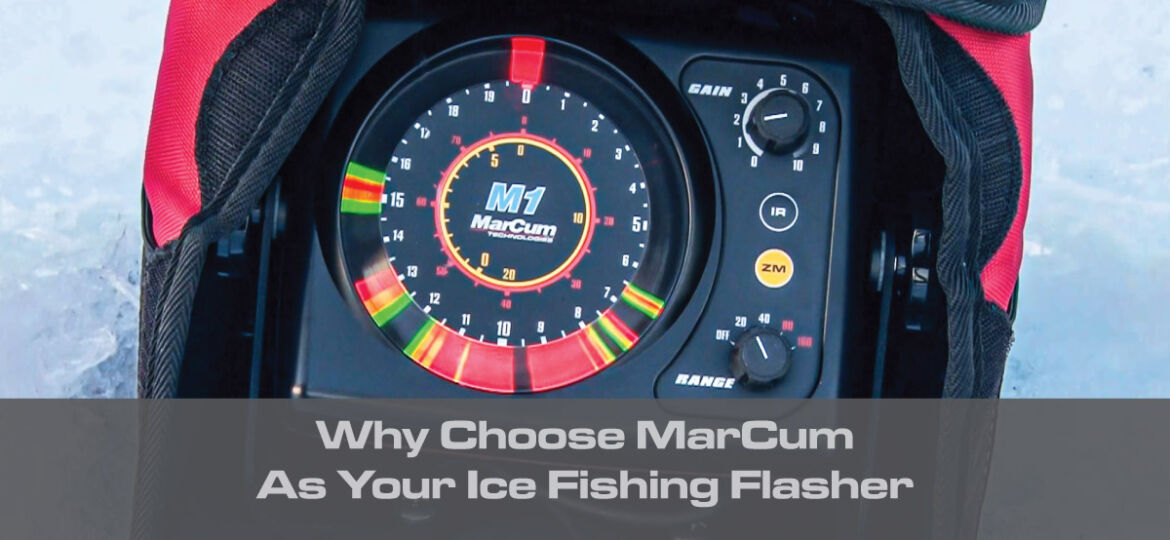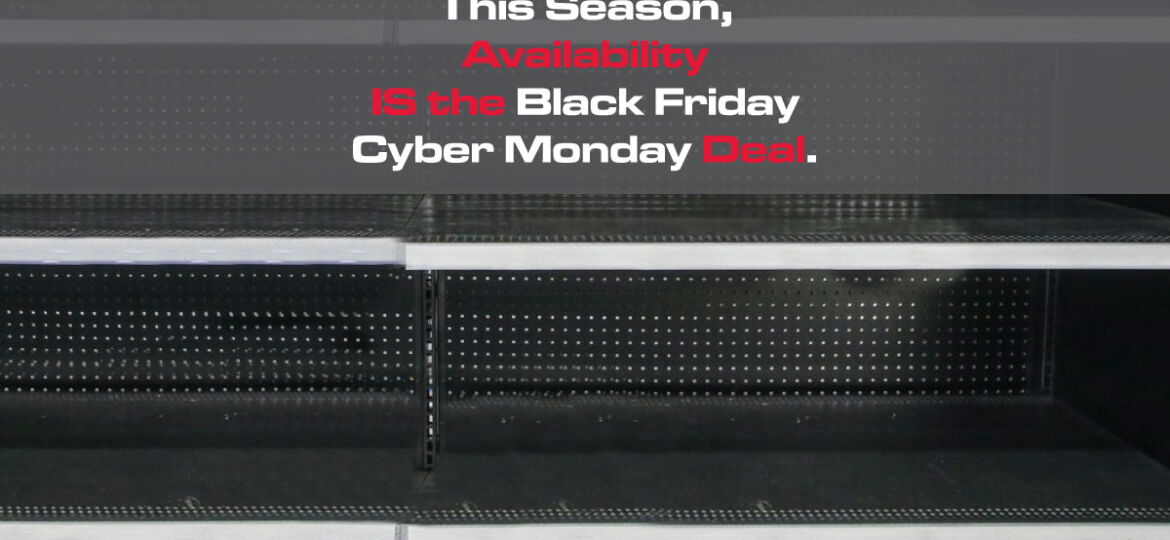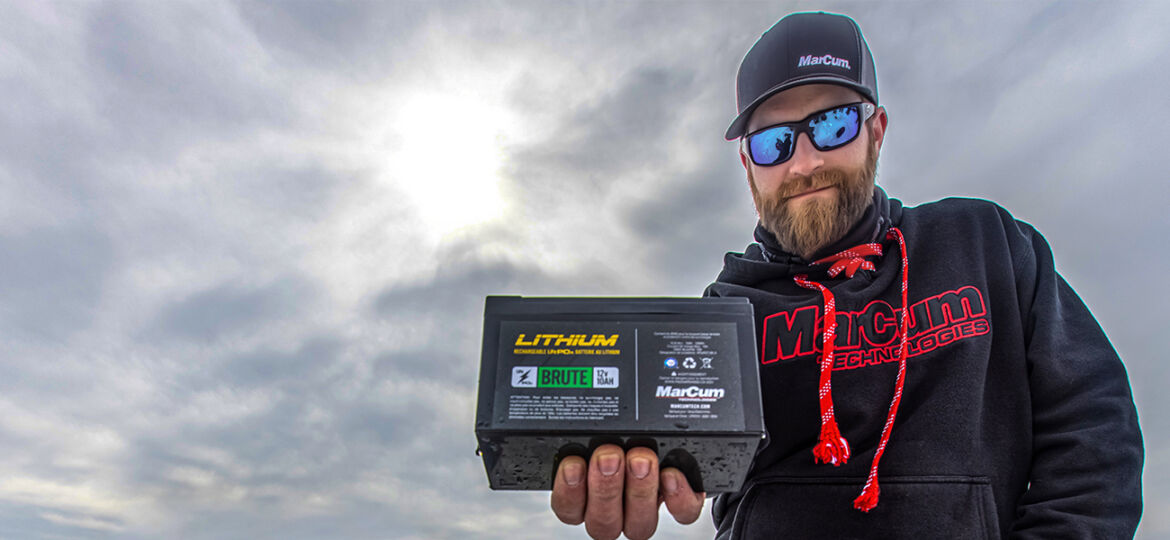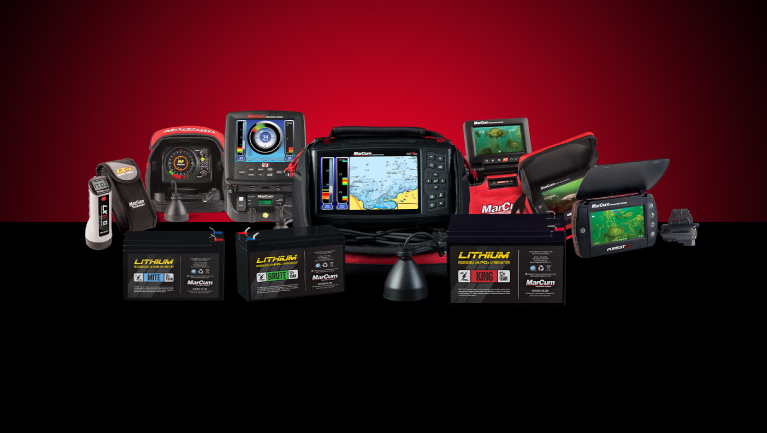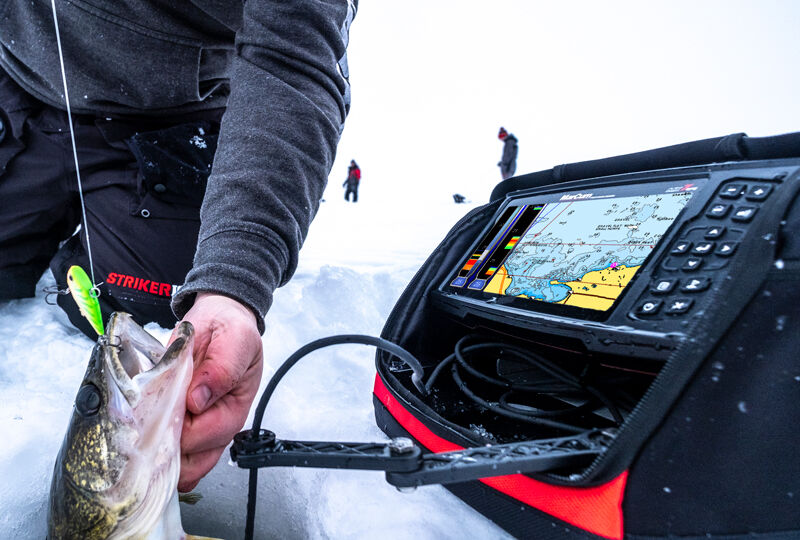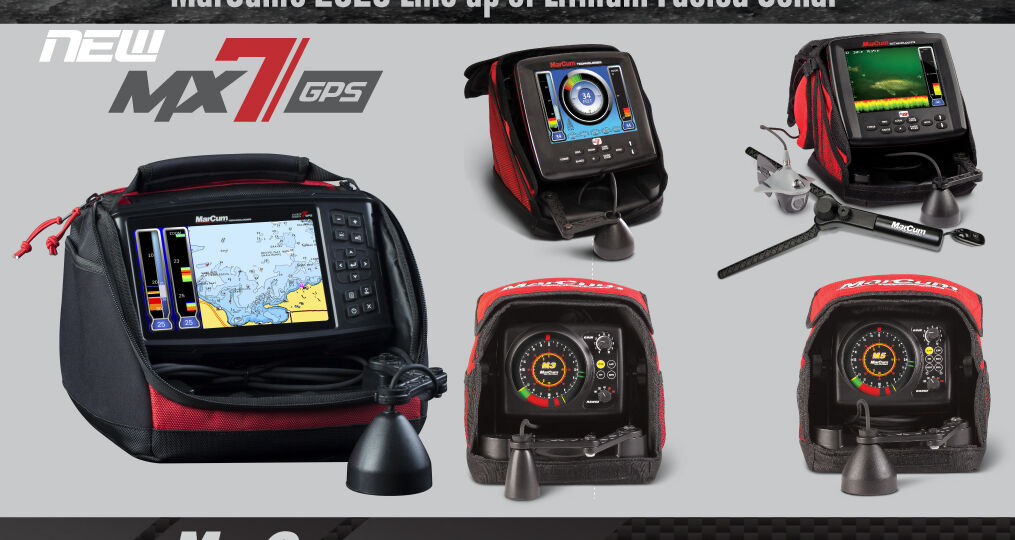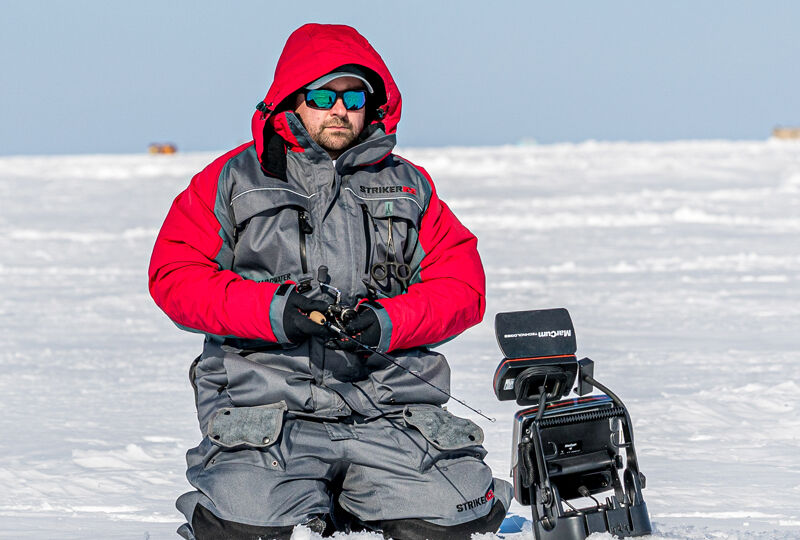Midwest angler Joel Nelson knows a thing or two about ice sonar. As MarCum’s longest tenured pro-staff member and media personality, he’s been running a MarCum since the brand’s inception. Though he could run any fish finder on the planet, he’s an avid fan of the M1. “It’s really a sonar that takes me back to some of the original MarCum units that just flat caught fish,” says Nelson. “You get exactly what you need in an ice locator, ready to fish out of the box.” Nelson logs thousands of miles across the ice belt each season, fishing and filming for a host of TV and video segments, all while toting an M1. “I appreciate so many of the MarCum units in the lineup, but I’ll always have an M1,” says Nelson.
know. First off, there are a lot of terms that are used in the ice fishing industry to describe the functionality of ice fishing electronics. Terms such as high frequency, chirp, live imaging, target separation, target identification, interference rejection, zoom and so on are used to describe the performance of the ice units.
New Hope, MN (11/18/21) –Based on the growing demand for MarCum products in Eastern Canada, the Minneapolis manufacturer has engaged Raytech Electronics, a warranty and maintenance service center to enable owners to receive service without having to hassle with international shipments. Raytech will be handling warranty and non-warranty repairs for MarCum consumers starting November 17th, 2021. This new relationship is expected to decrease repair service times by at least 5 business days for Eastern Canadian customers.
If you’ve tried to make a major purchase in 2021, you’ve been affected by the global supply chain slowdown. Materials are backordered, shipping is slow, containers held up; there are seemingly more reasons than ever these days for why you can’t get at what you’re looking to own.
Press Release – New Hope, MN (9/29/21) – Marcum Technologies, the undisputed leader in ice-fishing-specific sonar and cameras, takes tech to the next level. Their long-held principle is that features are useless unless they help an angler catch fish, and that can be seen throughout decades of innovation. Patented technology like moveable zoom that led to angler’s ability to target fish anywhere in the water column was the first ping heard round the world among the ice sonar community. They followed it up with additional advancements to help distinguish echoes from noise in an interference rejection system so advanced, it’s also patented.
Marcum Technologies is a company built upon the sport of ice-fishing, bringing forth patented technology and exclusive features unprecedented in ice electronics. Though at MarCum, our mantra is that features for feature’s sake are worthless unless they put more fish on ice. For the last 20 years, MarCum has brought the bulk of fish-catching invention to the ice market, with a long list of patents, sonar-firsts, and innovations immediately copied by the rest of the industry. MarCum units are hand-built, one at a time, from a blank circuit board on up. All of those advancements have happened right here in the heart of the ice belt, meaning all Marcum sonars are American-made. Below is a list of this year’s systems, and what make them each the top-performing sonar in their respective classes.
The all-new MarCum MX-7GPS pairs GPS and mapping with the most advanced, proven ice sonar of all time. Gone are the days of using open-water sonar simply to get GPS capability; welcome an era of ice-specific sonar/GPS innovated for the rigors and mechanics of our sport.
Marcum Technologies, the undisputed leader in ice-fishing-specific sonar, takes tech to the next level. Their long-held principle is that features are useless unless they help an angler catch fish, and that can be seen throughout decades of innovation. Patented technology like moveable zoom that led to angler’s ability to target fish anywhere in the water column was the first ping heard round the world among the ice sonar community. They followed it up with additional advancements to help distinguish echoes from noise in an interference rejection system so advanced, it’s also patented.
It could be the most common question found on internet forums, Facebook groups, and among the freshman class of ice’s newest anglers – “Sonar or camera?” Sounds like a simple question. Multiple choice even. The answer has always been straight-forward too, with most experienced anglers leaning towards a sonar first, then purchasing a camera to eventually fill in the knowledge gaps as needed depending upon their species of interest.



